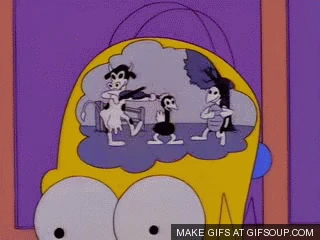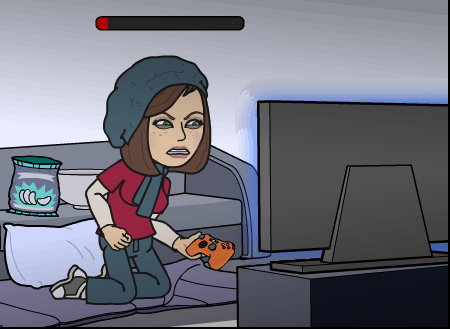Greetings Earthlings! 🙂
So today I’m going to be talking a little bit about-

Haha! Sorry about that! 😛 Although fun story- genuinely stopped mid conversation to cry “SQUIRREL” when out with a friend recently! 😉
Yes that’s right, today we’ll be talking about ADHD in autism- also known as attention deficit hyperactivity disorder.
ADHD is commonly diagnosed in autists (in the region of 29-83%), causing such difficulties as impulsiveness, over-activity and poor attention.
There are 3 main types of ADHD:
- Inattentive ADHD (formerly known as ADD (attention deficit disorder))- This can manifest in a number of ways such as a lack of attention to detail, losing things, organizational problems, making careless mistakes, having trouble completing tasks and struggling to sustain attention.
- Hyperactive-Impulsive ADHD- Signs of hyperactivity and impulsivity include restlessness, excessive talking (Guilty!) fidgeting, interupting others, impulsive descisions and activities etc.
- Combined Inattentive and Hyperactive-Impulsive ADHD
Personally, I would have really mild combined ADHD tendencies. In addition to my sometimes impulsive nature, I have a habit of zoning out of lessons and conversations, sometimes even films, books and TV shows for brief moments, completely lost in my own thoughts.
I can be pretty easily bored and distracted!
Half the time I’m not even aware of it happening. I could be reading a page in a book one minute, and suddenly find myself halfway down the next page, without any idea of what I was supposed to have taken in! Other times I find myself in a room in the house unsure as to why I came in as I hopped onto another train of thought mid action! I often have to repeat tasks over and over in my mind to ensure I don’t forget them.
My mind just completely wanders off…

But somehow I’ve always managed to hide my inattention. It never really posed a problem at school. Teachers knew I was away with the fairies, but could never seem to catch me out when pressed! 😛 I suppose my deductive skills must have learned to compensate for my temporary lapses in concentration! 😉
Top Tip: Studies have suggested that playing video games may be beneficial to improving concentration in ADHD.

Just because concentration can be a struggle however, does not mean that you can’t concentrate.
Interestingly, there occurs a concentration paradox in ADHD and autism known as hyperfocus- an intense form of concentration where you are completely absorbed by a task, something that I like to call “The Zone”. I’ll write a separate post on hyperfocus at a later stage 🙂
Aoife’s Top Tip: Applying specialist interests to tasks can encourage concentration. Last year I was struggling to write an essay for college, I found an angle that allowed me to write about Eurovision and suddenly I couldn’t stop writing! 🙂
In addition to my lapses in focus, I can also be a little bit hyperactive. Now, hyperactive doesn’t necessarily mean bouncing off the walls like a child high on sweets, it can also mean abnormally active.
I am quite a restless individual. On the outside, I may look like I’m staring at a wall, in my mind I could be designing a cake, a knitting project, writing a story or drafting a hypothesis. I once spent a train ride visualizing, staging and arranging a musical based on the music of My Chemical Romance!😂
I always have this need to be productive, even if it’s as simple as building my trophy collection on the Playstation or binge watching a TV series.
My brain never turns off!
If I’m excited enough, I do bounce around the place on occasion too 😉

But what’s going on in the brain that interrupts our concentration?
It is not clear what exactly causes ADHD in the brain, but remember neurotransmitters? (Inside the Autistic Brain, Autism 101-Sensory Processing, Autism 101- Digestive Problems)
Most current models point to low levels of the neurotransmitters Dopamine and Noradrenaline. Pathways involving these chemical messengers project to the striatum and prefontal cortex of the brain- areas which are responsible for executive function (i.e. memory, planning, organization, behaviour control etc.). If these neurotransmitters are out of sync, this will have an effect on these functions. As neurotransmitters are also dysregulated in the autistic brain, this would explain why ADHD so commonly occurs in autism.
ADHD, like autism, can’t be cured, but it can be treated with cognitive behavioural therapy (CBT) and medication in severe cases, however, the side effects of medical treatment for ADHD have been controversial, and long term usage studies have yet to be completed.
However, like autism, ADHD need not hold you back in life. Some of the most successful people in the world have ADHD, such as Sir Richard Branson, Justin Timberlake, Simone Biles, will.i.am, Russell Brand, Ryan Higa, Jamie Oliver, Jim Carrey and Solange Knowles 🙂
So to conclude Earthlings-
Wait! What was I saying again?! 😉

Have a good weekend guys!! 😀
Aoife








